It’s Just Not Fair(field)
Fairfield (Google Maps Location)
June 13, 2009
Since my 2009 visit, this museum has changed its name and has expanded its programming. Perhaps its yet another candidate for a revisit and an update to this page.
I would guess that about 140 of the 169 towns in Connecticut have some form of town history museum. Many are housed in interesting old houses and others are just old buildings that withstood the test of time. And then there are the very rare exceptions, like this one: The Fairfield Museum and History Center. It’s new. It’s beautiful. It’s dust free. It’s spacious and well-lit. In short, this is not your typical charming ol’ historic house or town historical society museum.
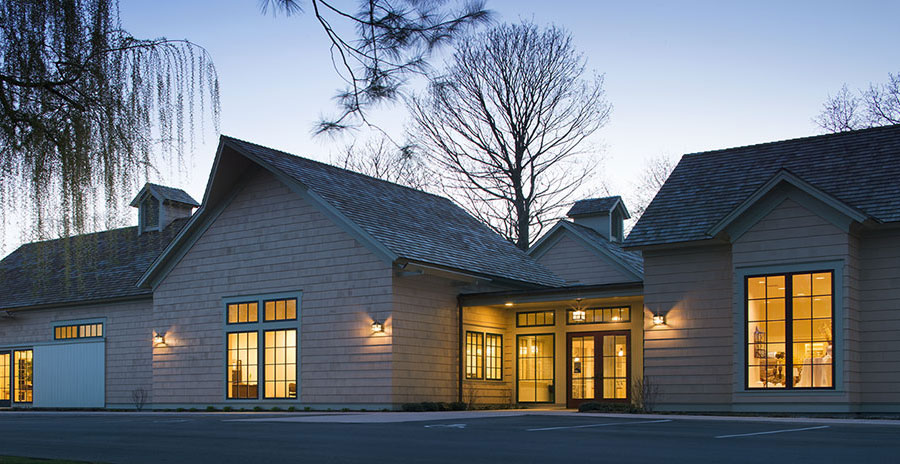
I went on an Open House Saturday with friends RobC and Yvonne. Most museums are free on Open House Day, but not this place. In fact, the woman at the reception desk charged us full price with a smile. I reminded her that due to it being Open House Day, I believe we were to get half price or something. She was dumbfounded but did find a note near the terminal stating exactly that – I think it was actually buy one admission get one half off or something like that. Her head nearly exploded trying to figure out what to charge us and I felt for her. Then again, I’m quite sure she just kept charging full price throughout the day – this was Fairfield after all, and who there cares about a few bucks?
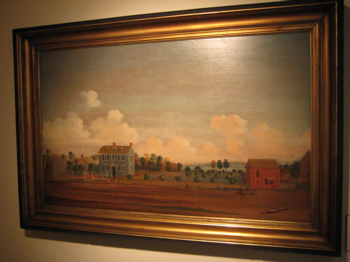
Once we sorted out the admission charge situation, the young woman gave us the lay of the land and went on to mention that it was our lucky day because the historical society’s two other buildings on the property here were also open today! Because it was Connecticut Open House Day! Um, yeah, we know. Because, errr, we just had to explain that to you 5 minutes ago and, um… Oh what the heck, we just smiled and reveled in the the excitement of being about to check out the old Fairfield Academy and Barn later. Those exhibits appear to be open only once or twice a year, so this was a definite win for us. Well, for me anyway. Rob and Yvonne probably died a little inside at the revelation.
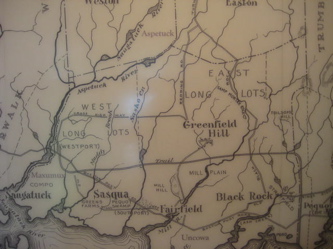
I’m struggling with how and what I should do with this write-up. I think that one of the most interesting things about the museum is the museum itself. I picked up their glossy and professionally published 30 page 2008 annual report that matches up with any small company’s report. It’s a very good read and contains a lot about how the gleaming new $6.5 million building was funded (lots of rich old people in Fairfield, of course). Heck, they’ve even got a pull-quote from one David McCullough, internationally famous historian who said, “Show your children and grandchildren that we love the history of this country, of this state and of this town, and why. Take them to the new Fairfield Museum, this sparkling, vital new History Center in the heart of your town, Fairfield.”
Well, if that doesn’t just take the cake. I know 168 other towns that are drooling over that endorsement.
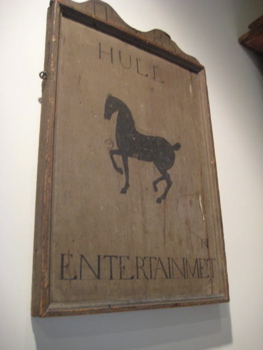
The Fairfield Museum and History Center was established in 2007 by the 103-year-old Fairfield Historical Society. The 13,000 square-foot museum presents engaging exhibition galleries, a special collection library and reading room, a family education center, an 80 seat theater overlooking Fairfield’s Town Green and a delightful museum shop. Since its opening, the Museum has successfully connected with a wider regional audience and has broadened the community’s understanding of its past through dynamic exhibitions and public programming.
Now, before we really get going, I must say that I’m not sure we got the full tour. The museum was (is) beautiful and the exhibits we saw were excellent, but I don’t think they had a temporary exhibit up and running. There was an empty room that may have been in between exhibits… But no matter, this place is wonderful.
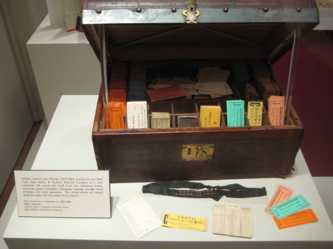
Once known as the Fairfield Historical Society, this 107-year-old organization has evolved into a brightly lit, carefully crafted community center devoted to the preservation and protection of Fairfield’s past. The building contains more than 30,000 items in its library holdings and museum collections, some dating as far back as the 16th century.
Well that’s cool.
Here’s the deal. For whatever reason, I took a million pictures of the museum’s explanatory signage. I must have about 40 pictures of just words. And I certainly don’t want to type out what those signs say and I don’t think you’d want to sit there and read that. Unfortunately, I seemed to have fixated on those signs and not on the stuff normal people take pictures of – please note that “normal people” on CTMQ is a very, very relative term.
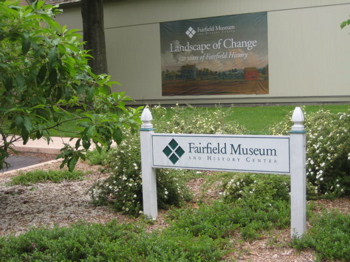
In light of this, I’m going to muddle through what I can and try to pull out the stuff I find most interesting. Again, please don’t let my poor presentation be a reflection on the museum; the place is great. You should go.
The main exhibit at the museum, which may be there permanently, was Landscape of Change. It was basically a nice shiny new telling of Fairfield’s history. Really, nothing different from any other town historical society museum… Just newer and nicer and better lit.
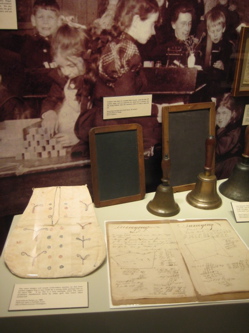
This exhibition at the museum tells the story of Fairfield and its changing identity across 375 years, reflecting areas of American experience from the late period of Native American occupation through to the mid-20th century. Featuring more than 100 of the Museum’s most treasured artifacts, Landscape of Change explores topics that highlight the development of Fairfield at different periods in its history.
The new galleries offer many opportunities for friends and families to connect with the past and to learn new things about our community. Did you know that in 1692 Fairfield was the site of witchcraft trials, the same year as Salem, Massachusetts’ infamous witchcraft hysteria? Did you know that the burning of Fairfield in 1779 by the British changed the town’s future? Did you know that the final chapter of the Pequot War took place in Southport, nearly 100 miles from the Pequots’ home territory? Learn more about these stories and many others, including the personal stories of Fairfield ship captains, slaves, Revolutionary War Patriots and Loyalists, a famous local spy, and a Fairfielder who joined the California Gold Rush.
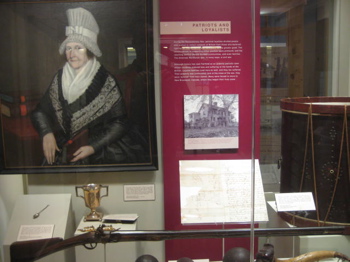
There is a short conversation with the museum’s librarian in that Annual report I mentioned and she made a comment about the Firelands in Ohio. I’ve always been fascinated by the whole Western Reserve and Firelands connection to Connecticut, and her mentioning it – and the above paragraph – has revived my interest. I will definitely get out there to Ohio someday and tour the area and towns and hit the Firelands Museum. What? You don’t know what I’m talking about?
Sigh.
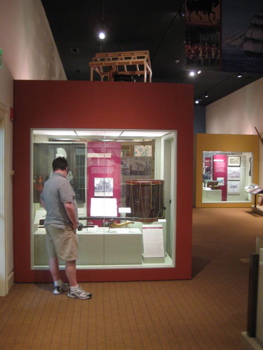
In short, on the morning of July 7, 1779, some 2,000 British soldiers made landfall on Fairfield Beach. Over the course of the next two days, the town of Fairfield, which had supported independence, was raided and almost completely destroyed. As a result, the displaced townsfolk were transplanted out to the landholdings Connecticut had in what was called the Western Reserve in what would become Ohio. Look at a map west of Cleveland (which was laid out by Canterbury, CT’s own Moses Cleaveland) and you’ll see a Greenwich, a New Fairfield, a Norwalk, a New London, etc., all in close proximity. Pretty cool, eh? To this day they are known as The Firelands.
The destruction wreaked by the British was extensive and had lasting impacts on Fairfield’s economy and development. Within the Four Squares, only six houses survived the burning. Total burned down: 97 dwelling houses, 17 barns, 48 stores, 2 school houses, 1 county house, 2 meeting houses, and 1 Episcopal church. Many more buildings were damaged. The historical society laments, “No image of the Burning of Fairfield or its immediate aftermath has been identified. Whether the event was not thought worth depicting, or whether it was treated as an unpleasant memory to be suppressed — we have to reconstruct the Burning of Fairfield from textual testimony alone.”

Now it’s my job to form the textual testimony of all the stuff in the exhibit… There was a corner filled with the vast history of Connecticut clock making. A worthy subject indeed, but why in Fairfield? The industry was centered up north in Waterbury and Bristol for the most part; in fact, there’s the incredible American Clock & Watch Museum up there. That said, there were a few prominent Fairfieldian clockmakers like Joseph Bulkley who specialized in tall clocks, or what we call “grandfather clocks.” The clock on display in the museum is one of his gems.
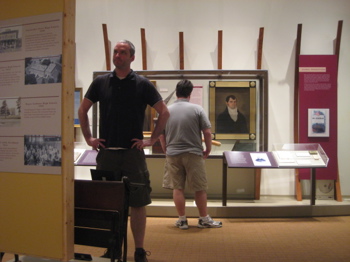
Ah, the required “post office wall” display that every town history museum has; even the most Podunk underfunded joints across the state. Right next to that, the old currency and the printing plate to create it from way back in the day when each town made their own money. Old post-Colonial painting of somewhere in town? Check Old map of town? Check.
All the usual suspects were here – which is not a negative thing. These are always necessary and of course, 90% of visitors don’t go to other town history museums to see the repetition, so it’s no big deal to them. I recognize this fact and refuse to make light of it – although I am a bit fascinated why they all have the post office wall. Ironically, post office practices really haven’t changed all that much in 150 years if you think about it.
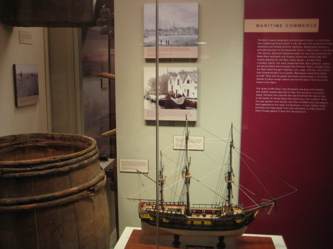
What is distinct about Fairfield and its history is the aforementioned burning of the town and some of the other rather ugly events from the past. Like the Great Swamp Fight. Since the typical CTMQ reader is a history genius, I must point out that this Great Swamp Fight is different from the better-known and later Great Swamp Fight that occurred during the King Philip War. No, no… this Great Swamp Fight happened down in the Southport section of Fairfield during the Pequot War. And here you probably thought the Pequot War was contained to the towns in Connecticut 50 miles east of Fairfield.
The battle is the earliest recorded event in Southport’s history – dating back to July 1637. In this episode of the Pequot War the English colonial forces led by John Mason and Roger Ludlow vanquished a band of about 80 to 100 Pequot Indians who had earlier fled from their home territory in the Mystic area of Groton and had taken refuge with about 200 Sasqua Indians who inhabited the area that is now Fairfield. The exact location of the battle is not known, but it is known to have been in the vicinity of Southport.
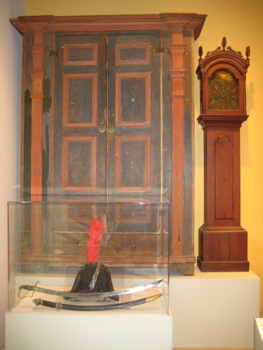
As discussed on other pages of this fine blog, most notably here, on a piece about the saga of the John Mason statue, the Pequot war was a rather brutal affair up in Mystic where the English burned up a fort full of Pequot women and children. The warriors, justifiably upset, decided to regroup with their Narragansett allies down here in Fairfield. The English decided they’d follow the Pequots down the coast to the swamp they were hiding in in Fairfield – in an effort to “finish them off.”
Sounds pretty awful, right? It gets worse… The English surrounded the Pequots and their hosts and began killing them by musket and by chopping them up to bits. At one point, the sophisticated English got word that half the people in the swamp were Sasquas and Pequot women and children. Living up to that famous English haughtiness, they allowed them to retreat before resuming the slaughter of the Pequot warriors.
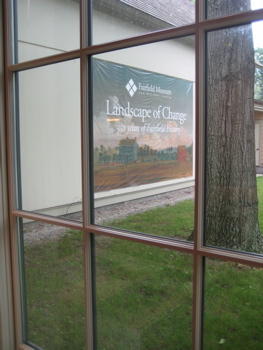
A few escaped under the cover of heavy fog, only to be beheaded by the Mohawks in upstate New York. Oh, and those women and children who were allowed “asylum?” Yeah, they were enslaved and sold to other “friendly” tribes up in Massachusetts. I guess, in a way, the handful of remaining Pequots have gotten the last laugh, with one of the largest casinos in the world.)
Moving on to a brighter chapter of Fairfield history, there was a nice display about the town’s illustrious past as a witchcraft trial hotspot! Turns out that Connecticut actually held more witchcraft trials than Massachusetts – which really shouldn’t be all that surprising since many of Connecticut’s Colonial settlers left Massachusetts because the colonies up there were simply far too liberal with their Puritanism. Our founders were a tad more hardcore; trust me, the more you learn about Thomas Hooker, the more you’ll wonder how we humans think we’re advancing.
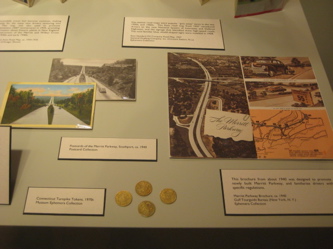
Anyway, Fairfield put to death about 16 witches – more than Salem, MA – and two of them were named Goodwife. That’s one of those facts that I’ll quite simply never forget and bust out to some unsuspecting acquaintance at some point in my life. That’s how I roll.
Continuing the theme of intolerance (I applaud the FHS for almost celebrating the town’s founding fathers’ insularity, inanity and violence), when Roger Ludlow framed out the town into squares and allowed the first 9, then ultimately 24 families to live there, the town adopted very strict rules on who could live in Fairfield. I have no idea what the rules were, but I’m sure they had to be WASPS and have money. It appears not much has changed in nearly 400 years of Fairfield history. (Sorry, low-hanging fruit is sometimes too delicious to pass up.)
Jumping ahead to the 19th century, there are nice displays at the museum about the town’s past connections with maritime trade and then the whole history of the town’s schooling. Here’s a blurb about the school exhibit:
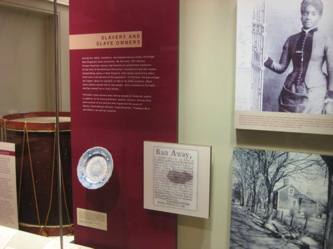
Children’s education in the 18th and 19th centuries is also a feature of our core exhibition. Come see the beautifully penned school items made or used by children. Parents will enjoy reading about the misdeeds of students recorded in a teacher’s notebook dated 1854, and seeing early tuition bills and report cards from the Fairfield Academy!
A little bit further on, we learned about the railroad’s impact on Fairfield. As is typical with Nutmeggers, townsfolk were shortsighted and vociferously against the new train line through town. Of course, once the track was laid and people realized New York City was a short ride away, the entire town changed and became a very posh place to live and commute from, or to summer in. Of course, this remains today a hallmark of Fairfield.
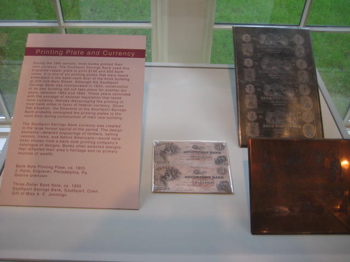
The next bit of progress was the building of the Merritt Parkway through town in the 1930’s and then I-95 in the 50’s. Now, one could argue that those opposed to each had a point, but in Fairfield the highways didn’t really create the urban poverty islands that interstates did in other cities like Hartford and Bridgeport. There’s a bit about the WPA projects during the depression as well.
A few other displays touched on things like the immigrant influx and their impact on the local workforce. This isn’t a very big story in Fairfield though – at least not like it is in the more industrial cities in central Connecticut.
And that’s it! One of the better town history museums in the state!
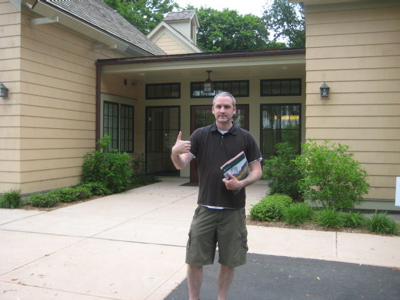
![]()
Fairfield Museum and History Center

 Michael Jehle says
Michael Jehle says
January 9, 2012 at 5:21 pmHi Stephen, thanks for your great write up on the Fairfield Museum. Just to let you know we’ve created a new and faster-loading website (www.fairfieldhistory.org) that should be much more user-friendly. You and your readers might also be interested to know that we are in the process updating and re-installing our main history exhibition that you discussed above. The exhibit your described is now down and the new exhibit is scheduled to open late November, 2012 and will be more interactive, fun and family-oriented. In there mean time we have a wonderful schedule of changing exhibits detailed on our website. Maybe we can lure you back for a visit and updated report later in the year when the new exhibit opens. Thanks for all of your fine work promoting CT’s great museums and history. – Mike Jehle, Fairfield Museum executive director
 Steve says
Steve says
January 10, 2012 at 10:30 amThank you for the update, Michael. I like to think of CTMQ as a website rather than a blog, but then I realized when I write time-sensitive stuff like the difficulties I had with your previous website, it becomes (thankfully) outdated.
As for a return visit, one never knows where this site takes me from month to month. Such is the adventure!